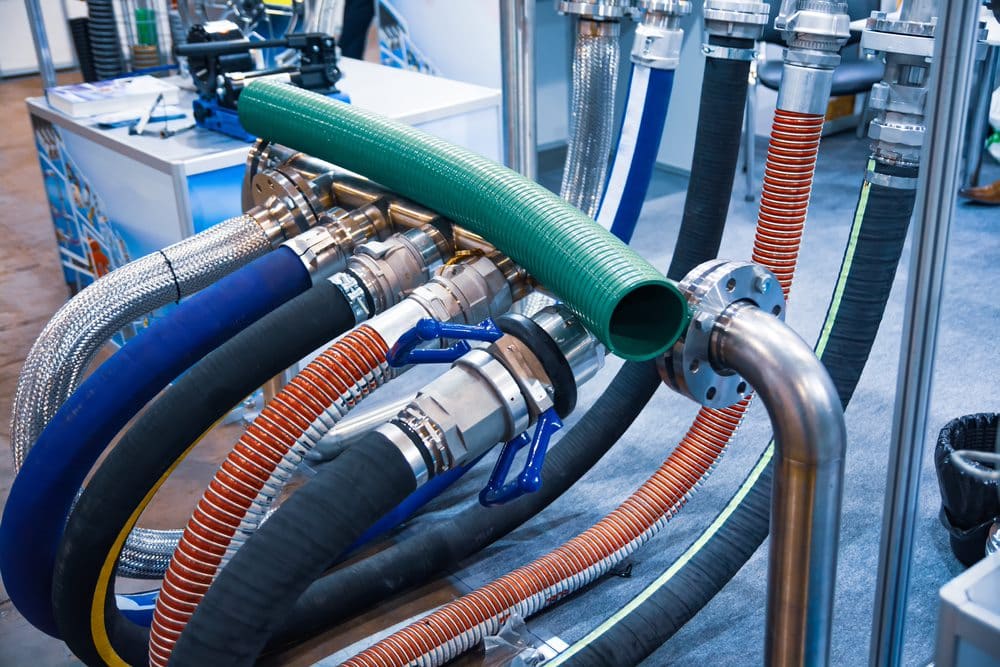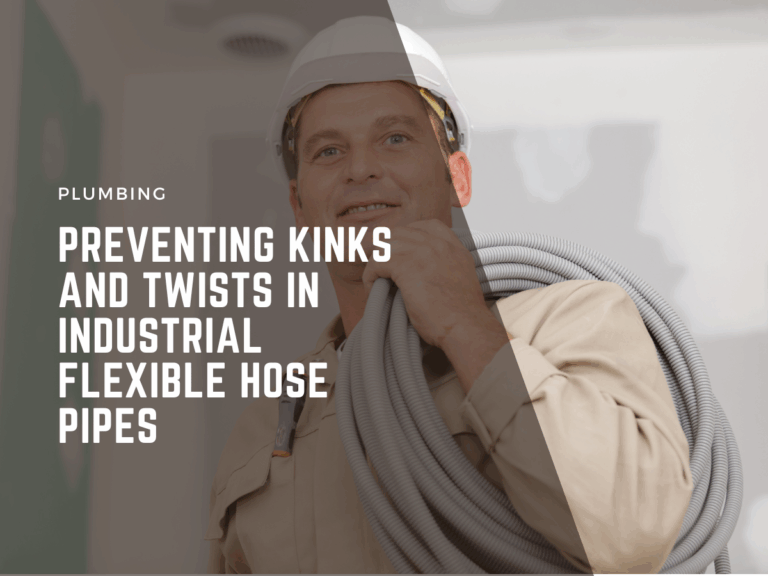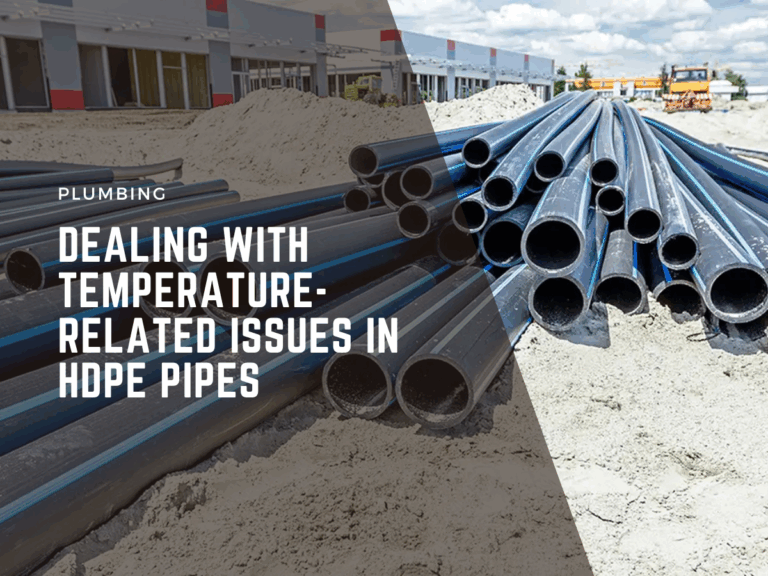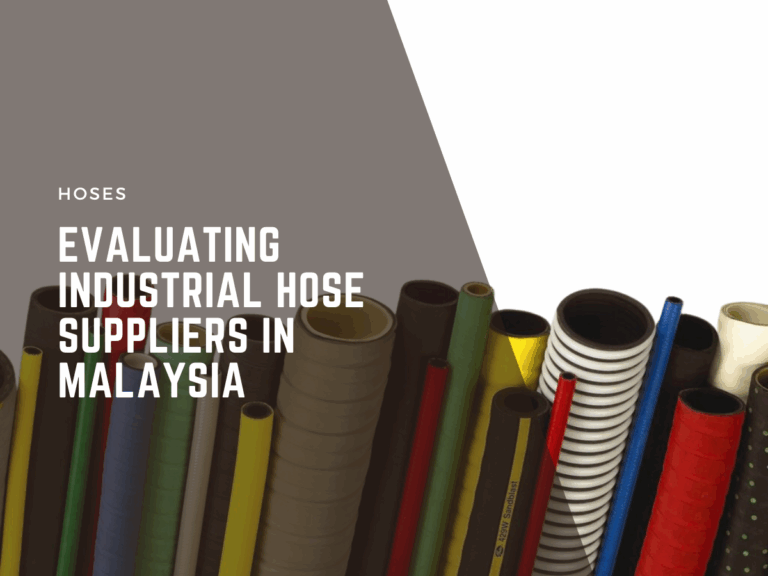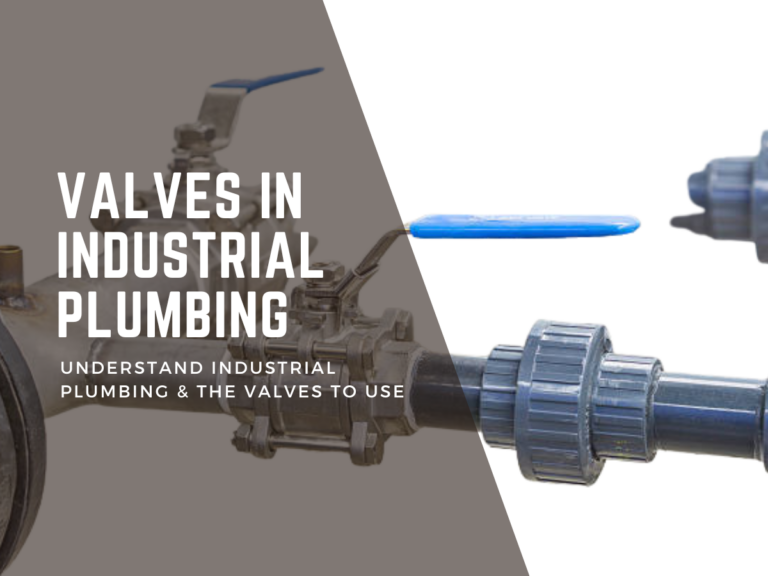When you’re dealing with industrial systems, optimal performance is essential. When fluid flow drops, productivity and equipment efficiency both take a hit—often quietly, until costly downtime appears. That kind of slowdown affects your workers, your timelines, and your bottom line.
Factory floors and industrial setups across Malaysia face repeated performance issues for many reasons. Whether it’s a blocked line, a weak fitting, or a pressure drop, problems quietly build up over time. Clearing up these issues early helps avoid long-term disruptions. We’ll look at common causes and the actions that can be taken to restore steady performance.
Common Causes of Low Flow in Pipe Hoses
Low flow in pipe hoses rarely happens without cause. Most of the time, there’s an underlying reason, and quickly spotting that reason can save time and money.
We have identified these usual causes:
- Blocked Hoses: The inside of the hose or pipe can collect debris, sludge, or scale over time. A clogged hydraulic hose or pipe narrows the space, which restricts the velocity of the fluid. This is especially common in systems with recycled or untreated process fluids.
- Wrong Hose Size: Using a pipe or hose that is incorrectly sized for the job puts strain on the entire system. A hydraulic hose with too small a diameter chokes the flow, while an overly large one can reduce the velocity needed at the application place.
- Worn-out or Damaged Hoses: Hoses wear down with daily use. Kinks, cracks, or crushed sections mess with the internal pressure and restrict how much fluid gets through the pipe. In Malaysia’s humid environment, these problems show up faster.
- Poor Installation: If fittings aren’t seated correctly or the hose alignment is off, fluid doesn’t travel smoothly through the pipe. Twists, sharp bends, or pinched sections all slow things down. Incorrect torque on fittings can also cause partial blockage or turbulence.
A common industry scenario involves a food processing facility experiencing reduced cooling effectiveness in their pipe lines. The issue was traced to several older fittings that had been mismatched over time. Replacing those sections with certified components immediately stabilized the flow.
How to Detect Low Flow Early
Sorting out low flow problems gets much easier when you follow a simple, consistent routine. It’s about staying consistent and being a step ahead before serious trouble starts.
We advise starting with these basic steps:
- Stick to Regular Checks: Don’t wait until something breaks. Build a habit of checking hoses, valves, and fittings weekly or monthly depending on their usage. Look for leaks, sharp bends, worn edges, or anything that looks off.
- Choose the Right Hose for the Job: Not every pipe suits every task. Measure the pressure and temperature ranges for your setup, then check hose specs against it before installing anything new. A hydraulic hose that handles steam won’t do well with corrosive chemicals, and vice versa.
- Keep Fittings and Valves Clear: A hose might be fine, but if the pressure valve feeding into it or the pumps are blocked, issues will follow. Take time to flush fittings and valves during scheduled shutdowns. This stops materials from clogging tight spaces in the pipe.
Improving flow isn’t always a big repair job. Often, it’s just taking small, steady steps to ensure everything runs as it should. Paying attention to what seems minor saves you from much bigger headaches later on.
Role of Quality Industrial Components (EEAT Focus)
Why is the quality of components so crucial for flow? Low flow issues often come back to one thing—component quality. Even with a clean system and timely checks, if your hoses or fittings aren’t up to standard, performance will degrade. Quality components don’t just last longer—they maintain consistent flow and reduce micro-leaks that build pressure loss over time.
In Malaysia’s heat and humidity, materials are tested daily. The difference in quality is critical:
- Reinforced hoses last longer and hold their shape better under pressure.
- Precision-designed valves offer consistent flow without sticking or leaking.
- Fittings built from the right materials won’t corrode or warp when exposed to chemicals or high heat.
As the official DK-Lok distributor in Malaysia, we emphasize that precision-engineered fittings are essential for maintaining seal integrity and preventing turbulence that causes flow restriction within the pipe. We are ready to provide expert guidance and dependable solutions.
Selecting A Reliable Supplier In Malaysia
Even the best system design will struggle without a dependable source for parts. The supplier you work with plays a big role in how smoothly your operations go. Inconsistent stock quality, slow lead times, or mismatched product advice can all lead to unwanted delays that strain your pumps.
In industrial settings like those in Shah Alam and Pulau Pinang, site shifts may already complicate scheduling. That’s why local experience and accessibility matter just as much as stock variety.
To size up a supplier properly, keep this checklist in mind:
- Do they regularly stock items built for high-pressure or chemical-heavy environments?
- Can they provide detailed product specs and confirm material origins?
- Are parts consistently available, with backup stock for urgent orders?
- Do they offer guidance on proper installation and sizing if your team needs support?
A supplier that understands your site’s working realities is much more likely to get it right the first time, saving you repeat work and stress.
Maintaining Efficient Industrial Systems
Keeping industrial hose systems flowing properly isn’t just about dealing with small hiccups. It’s the mix of consistent maintenance, smart part selections, and knowing when something’s not working as it should. Even a slight drop in flow rate might mean something’s wearing down. Get ahead of it, and you stop a minor issue from turning into a major fix.
Take time to plan inspections around production cycles, and always match hoses, valves, and fittings to the real demands of each task. That means checking pressure levels, chemical exposure, and temperature swings—not just pipe size. A good system isn’t just what goes into it on day one. It’s how that system gets supported over time.
Teaming up with someone who helps you stay ahead makes your workday easier. Whether you’re sorting pipe hose setups in an assembly plant or maintaining facilities that rely on steady pressure, keeping flow smooth takes more than a quick fix. It’s ongoing.
Final Call to Action
For businesses in Malaysia focused on keeping their operations running without interruptions, using the right parts makes a big difference. With consistent maintenance and reliable equipment, systems stay productive.
Contact Simlec Co today for expert advice or request a quote on precision-engineered fittings and hydraulic hoses designed to maintain optimal flow — even in Malaysia’s toughest industrial environments.
With Simlec Co as your partner, you can rely on fluid system solutions built for reliability, efficiency, and the unique challenges of Malaysia’s industries.

